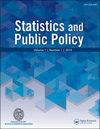Estimating Local Prevalence of Obesity Via Survey Under Cost Constraints: Stratifying ZCTAs in Virginia’s Thomas Jefferson Health District
IF 1.5
Q2 SOCIAL SCIENCES, MATHEMATICAL METHODS
引用次数: 0
Abstract
Abstract Currently, the most reliable estimate of the prevalence of obesity in Virginia’s Thomas Jefferson Health District (TJHD) comes from an annual telephone survey conducted by the Centers for Disease Control and Prevention. This district-wide estimate has limited use to decision makers who must target health interventions at a more granular level. A survey is one way of obtaining more granular estimates. This article describes the process of stratifying targeted geographic units (here, ZIP Code Tabulation Areas, or ZCTAs) prior to conducting the survey for those situations where cost considerations make it infeasible to sample each geographic unit (here, ZCTA) in the region (here, TJHD). Feature selection, allocation factor analysis, and hierarchical clustering were used to stratify ZCTAs. We describe the survey sampling strategy that we developed, by creating strata of ZCTAs; the data analysis using the R survey package; and the results. The resulting maps of obesity prevalence show stark differences in prevalence depending on the area of the health district, highlighting the importance of assessing health outcomes at a granular level. Our approach is a detailed and reproducible set of steps that can be used by others who face similar scenarios. Supplementary files for this article are available online.在成本限制下通过调查估计当地肥胖患病率:弗吉尼亚州托马斯杰斐逊卫生区的ZCTA分层
摘要目前,弗吉尼亚州托马斯杰斐逊卫生区(TJHD)肥胖患病率的最可靠估计来自疾病控制和预防中心进行的年度电话调查。这一地区范围的估计仅限于决策者,他们必须在更精细的层面上针对健康干预措施。调查是获得更精细估计的一种方式。本文描述了在进行调查之前对目标地理单元(此处为邮政编码制表区或ZCTA)进行分层的过程,因为这些情况下,由于成本考虑,无法对区域(此处为TJHD)中的每个地理单元(这里为ZCTA)采样。使用特征选择、分配因子分析和层次聚类对ZCTA进行分层。我们描述了我们开发的调查抽样策略,通过创建ZCTA的地层;使用R调查包的数据分析;以及结果。由此绘制的肥胖患病率图显示,根据卫生区的不同地区,肥胖患病率存在明显差异,这突出了在颗粒水平上评估健康结果的重要性。我们的方法是一套详细且可重复的步骤,其他面临类似情况的人可以使用这些步骤。本文的补充文件可在线获取。
本文章由计算机程序翻译,如有差异,请以英文原文为准。
求助全文
约1分钟内获得全文
求助全文
来源期刊

Statistics and Public Policy
SOCIAL SCIENCES, MATHEMATICAL METHODS-
CiteScore
3.20
自引率
6.20%
发文量
13
审稿时长
32 weeks
 求助内容:
求助内容: 应助结果提醒方式:
应助结果提醒方式:


